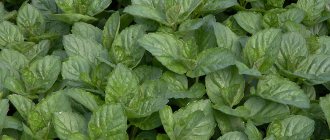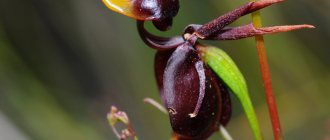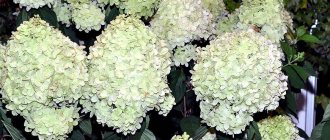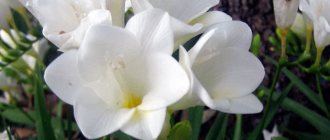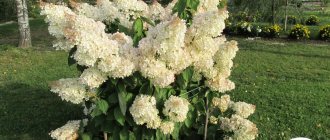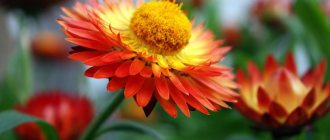Types and varieties
Breeders have developed many species of miniature tropical plants. New products appearing every year have different shades of inflorescences and differ in the duration of flowering. Orchid growers share photos of dwarf orchids. The most popular varieties:
| Varieties | Distinctive features |
| Pink | The name of the variety was given by the color of the flowers. This is one of the smallest orchids. The size of the leaf blades usually does not exceed 8 cm, and the length of the peduncles is 20 cm. Up to 15 small inflorescences bloom on one plant, their size is about 3 cm. |
| Mini Mark | A hybrid bred from the dwarf variety Micro Nova and phalaenopsis. Its flowers are white, with pink or yellow specks. Lip color is brownish. The leaf plates of the Mini Mark orchid are of a rich shade, up to 15 cm long. |
| Multiflora | A feature of multiflora is the appearance of a large number of medium-sized buds. Plants often branch heavily, and their flower stalks do not stop growing even during the flowering period. |
| Luddeman | The variety is named after the French breeder. Height - up to 20 cm. 6-7 buds of unusual striped color simultaneously bloom on one peduncle. Their color is deep purple, with brownish tips. |
| Philadelphia | The hybrid was obtained based on several varieties of phalaenopsis. Its leaf plates are distinguished by a silver-green, “marble” color, and the petals are purple. |
| Cattleya | This is a popular variety of mini orchids. One of the most common varieties is called “Walkera”. Its leaves are dark green, about 10 cm long. And the inflorescences are large in size, up to 8 cm. |
| Hummingbird | A distinctive feature is the shape of the flowers, similar to a star. Outwardly, it resembles a hummingbird. Peduncles are miniature, up to 12 cm in length. They produce several flowers that do not fade for up to 45 days. |
| Cymbidium | One of the most unpretentious small orchids. Its flower stalks, about 15 cm high, grow among narrow, long leaf blades. White or pink flowers bloom on them, emitting a delicate aroma. |
Distinctive features of phalaenopsis
Phalaenopsis Multiflora has a bowl of 4–6 (some varieties – 10–12) large shiny leaves up to 40 cm long, next to which peduncles grow directly from the soil.
The stem is almost invisible, because it is poorly developed and densely covered with leaves. The peduncle is a long (up to 60 cm) branched stem; a lush floral corolla is formed at the top of each branch. The flowers are small, but numerous: so that the corolla of Multiflora is approximately equal in size to the flower of an ordinary classic phalaenopsis. It is distinguished by the special airiness of its inflorescences.
Some subspecies have a fairly large lip and belong to the Big Lip phalaenopsis class.
The colors of Multiflora in the varietal variety are different, the most popular colors are:
- pink of all possible shades;
- white;
- lilac (from the lightest to almost purple);
- yellow;
- peach;
- coral;
- various combinations of the above colors and shades.
Due to the branching of the peduncles, the blooming Multiflora can resemble a lilac branch in shape. Flowers are constantly renewed: old ones wither and fall off, new ones bloom.
The standard flowering period is twice a year, but thanks to regular renewal and with proper care, the orchid can bloom all year round: old flower stalks will be replaced by new ones without a time interval between flowering.
What is the difference between mini and midi orchids?
The main difference is the height of the plants and the size of the blooming buds. Mini orchids rarely exceed 20 cm, their peduncles are very fragile, the flowers are no more than 4 cm. Midi grow 55 cm, their buds reach 6-7 cm in diameter.
Features of flowering
Most varieties can bloom year-round; some produce buds in winter and spring. Up to 15 flowers can appear on peduncles. Due to their fragility, it is often necessary to install supports. Some varieties of decorative orchids bloom in lush clusters and are planted in hanging pots and baskets. Blooming buds do not fade for up to 30 days. To prolong flowering, orchid growers advise placing the pot with the flowering plant in a shaded place and watering it less often.
Varieties with name, description and photo
The Phalaenopsis Multiflora species includes about 70 varieties - both popular and rare. Let's look at the most common varieties.
White
Multiflora white. The flowers are white without shades of other colors or inclusions, but have a yellow core. The shape resembles very small water lilies.
Read about other white phalaenopsis here.
Purple
Multiflora purple. The flowers are relatively large. The petals are lilac: dark at the edges, lighter towards the middle. They shimmer slightly in the light, as if covered with white wax.
Mirage
Mirage. It belongs to the variety of midi orchids, when there are not as many buds on the peduncle as on a regular multiflora. The flowers are an interesting brick shade with small inclusions. The lip is a plain crimson color.
Sanion
Sanion. White or pale pink petals covered with purple specks. The heartwood is yellow-purple.
Externally and in terms of botanical characteristics, it resembles the Wild Cat and Cleopatra varieties, which is why they are often confused.
Santos
Santos. White or pale pink flowers are arranged in a crowded arrangement. The cores are voluminous and yellowish.
Soft Cloud
The peduncles are covered with identical white flowers with yellow cores. The inflorescence looks quite uniform and rustic, resembling a cloud in shape.
Schiller
On Phalaenopsis schilleriana, up to 100 fragrant soft pink buds can bloom simultaneously. What else is so interesting about this variety and its hybrids can be found here.
The Dragon
Dragon. Bright yellow petals, closer to the core, slightly carelessly covered with pink specks. The core is white-pink, voluminous.
What other popular phalaenopsis varieties are sunny in color? Read here.
Brown Sugar
The flowers are red-wine in color, but have a snow-white edge. Average size for the variety.
Cx322
Sometimes it can be found under the name Chameleon or Rembrandt. The petals are light pink with crimson splashes. If the inclusions are dense enough, the flowers appear darker.
Black night
Black night, but can also be found under a different name. The flowers are purple or dark purple, but the center and edges of the petals are pure white, creating an interesting contrast. It is distinguished by the triangular shape of its petals.
Midi (Venice)
Unlike other representatives of the Multiflora species, there are not so many flowers on the inflorescence, and they are somewhat larger. The petals are white and wide, the core is yellow, not clearly expressed.
Growing conditions
The question of how to care for a mini orchid is usually not difficult for gardeners. Plants require fertilizing during active growth at intervals of 2 weeks and replanting every 2-3 years.
Temperature
In the room where tropical flowers are kept, the temperature must be maintained from +180 to +250 C. They must be protected from drafts and sudden temperature changes, otherwise they may die. At night, the room should not cool down by more than 50 C. If in the summer the pot can be kept on the balcony or loggia, then in the winter it must be brought into a warm room.
Flower placement in the house
Exotic plants require good lighting. At the same time, they should be protected from direct sunlight to prevent burns to the leaf plates.
Air humidity
Mini orchids feel uncomfortable in conditions of high air humidity; in such conditions, their root system can rot. The best humidity level is 30% to 40%. If the air is too dry, the plants may drop their buds. You can keep containers of water nearby and practice spraying. This helps regulate humidity.
Substrate
It is recommended to grow small orchids not in a substrate containing tree bark, but in sphagnum moss. It retains moisture for a long time, so you can’t water it too often, otherwise the roots may rot.
Pot
Planting containers are usually small, about 8 cm in diameter. They can be placed inside flowerpots that match the interior. The walls of the pot should be transparent. This provides light access to the roots and allows you to monitor their condition.
Lighting
Mini orchids should receive moderate lighting. They require protection from direct rays that can cause burns. In the winter months, additional lighting does not hurt.
Watering mode
The frequency of watering depends on the substrate. It is recommended to moisturize plants by immersion in fresh, clean, settled water. Its temperature should be 50 C higher than the air in the room. If there is moss in the pot, reduce watering. Moisture must be added after the soil has dried.
Home care
- Watering: regularly moisten the soil as it dries out. It is advisable to use a tray and pour water into it.
- Substrate: loose soil mixture for orchids.
- Temperature and humidity: up to 30 degrees in summer and up to 25 in winter, daily differences - 3-4 degrees. High humidity depends on temperature: the lower it is, the lower the humidity.
- Lighting: bright and abundant, but without scorching rays.
- Replanting: does not need to be replanted except in special cases (depleted soil and cramped pot).
